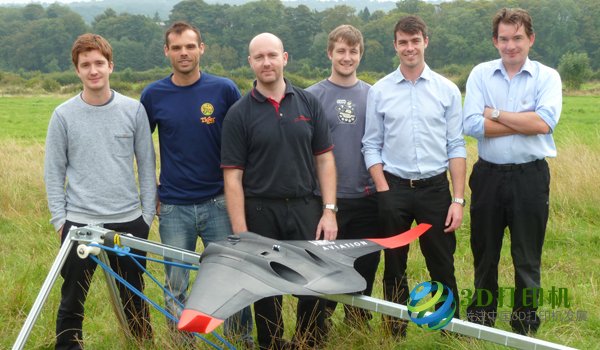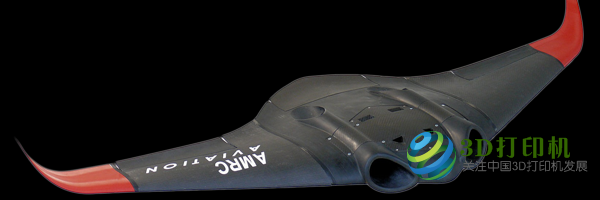The Advanced Manufacturing Research Center (AMRC) was established in 2001 with the University of Sheffield and Boeing in the United Kingdom. Since its establishment, AMRC has made great progress, especially since 2008, it has added Rolls-Royce Factory of the Future. AMRC not only has an increasingly large organization, but its Design and Prototype Group (DPG) has earned a global reputation for innovation. In March of this year, DPG demonstrated to the outside world a prototype of a UAV with a wingspan of 1.5 meters using ABS plastic 3D printing. However, this drone is just a glider. DPG hopes to further improve it to make it more powerful.
At the SAE conference held in Salt Lake City in October this year, the AMRC unveiled its 3D-printed drone with its power and successfully tested it. According to the development team, they installed two EDF (Electric Ducted Fan) engines as their power source for this drone. The two EDF engines can produce a combined thrust of 2.5 kilograms, making it possible to cruise at speeds of up to 20 meters per second, or 45 mph.

Drone development team members: Sam Bull, Mark Cocking, Keith Colton, Daniel Tomlinson, John Mann, and Garth Nicholson, in front of the drone on the ejection shelf
On the basis of the earliest glider model, the development team further carried out a series of CAD designs. The FDM-based 3D printer was used to print the aircraft's main body, wing ribs, elevons, and wing tips. The carbon fiber (using vacuum infusion) was used for the skin, fins, intermediate ribs, and hatches of the wing. Combining these manufacturing techniques with cured resins (reduced need for high-pressure steam curing), each part can be produced precisely and directly in the form of CAD manufacturing.

With the addition of the EDF engine, the weight of the entire drone has been increased to 3.5 kg and the weight has exceeded the earliest designed gliders. Therefore, in order to ensure the unmanned aerial vehicle lifts successfully, the development team used 3D printing to customize a catapult.
The successful test flight of this new powered drone represents a major advancement for its rapid manufacturing (RM) technology for the AMRC and the project. Small and medium-sized manufacturers can use 3D printed parts in prototyping and final product manufacturing, further reducing time, materials, and cost.
However, UAVs powered by EDF engines are not the end point of DPG design and development. They hope to continue to develop on this basis and eventually create a drone with a wingspan of up to 3 meters using natural gas turbines as engines.
(Editor)